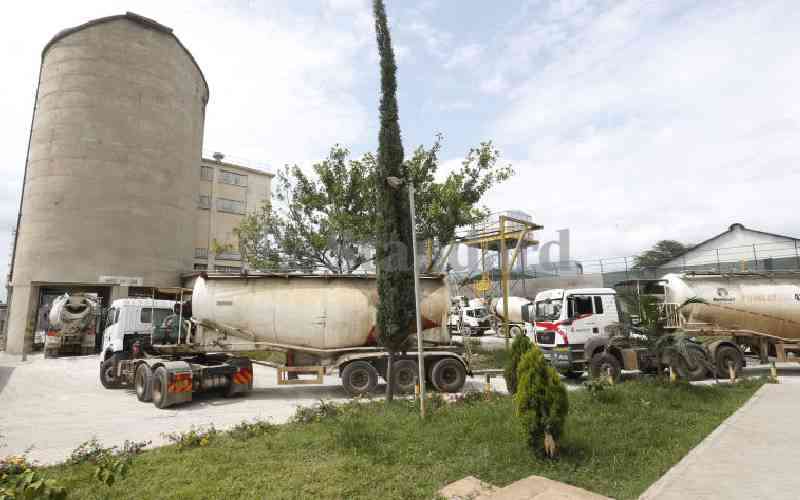By AMOS KAREITHI
The journey into captivity started with the cracking of whips as loaded guns, index fingers on the trigger menacingly swung on the faces of the barefoot immigrants trekked into obscurity.
Those old enough to trek recall stares of hostility and sneers as the heavily laden immigrants for the last time passed through village paths their ancestors had used for generations.
Many would not come back to their ancestral land. Their bones and spirits scattered in captivity, crying for release, long after their tormentors had gone.
During the documentation and retelling of the story of Kenya’s struggle for independence, little has been said about a clan of refugee prophets forced into exile between 1932 and 1937 in a mosquito infested valley, in a trick designed to exterminate them.
The trek, the 30 years in captivity and the misery the Talai clan has been through, though not well documented in history books, is forever engraved in the hearts of every clan member and orally passed across generations.
Skewed laws
The colonial government’s motivations to criminalise an entire community, confine its members into a valley where pests and diseases had wiped out wild animals, was questioned by some members in the Legislative Assembly.
While skewed colonial laws can justify this communal punishment, the suffering of Talais during decades of captivity in the wilderness, pulls the heartstrings as their cries of injustice echoe across Kenya, where their homeless descendants wallow in poverty.
The Talai clan, though resident in Nandi and Kipsigis, are believed to be closely related to the Maasai prophets, the Oloibons, who had powers to foretell the future.
Historian John Lonsdale in A Modern History of Kenya 1895-1980 explains Oloibons were banished away from Maasai land mid 1880s for failing to foresee a series of famines and epidemics and warn the community before which they and a half of their livestock were wiped out.
The Talais, as a clan member, retired major Wilson Koitaba explains, believe they originated from the assimilation of Nandi and Kipsigis sub-tribes in the last quarter of the 20th century and share Maasai blood, as evidenced by the name Laibon, borrowed from Oloibon.
An elder, Elly Joseph Sigilai says when the white men came into contact with the clan, its members were residing in Nandi, under the leadership of their spiritual head, the Orkoiyot, variously known as Laibon.
Stay informed. Subscribe to our newsletter
Koitaba says from the first encounter with the British, the Talai resisted the occupation of their land by the colonialist, culminating in the killing of their leader, Koitalel arap Samoiei in 1905.
Later, Koitatel’s brothers were rounded up and detained, to subdue the clan, which was perceived to be the inspiration of the resistance.
Sealed fate
The British were convinced the Talai was a special clan, which united the Nandi and the Kipsigis against the Government and the only way to break the resistance was to exile the whole community.
“In 1925, the Talais were found in possession of 25 guns, which had been seized from Government agents.
They (Nandi) were preparing a major operation against the British,” as Bill Ruto, a researcher, explains. Koitaba says during previous confrontations, the British had to call for reinforcement of troops from as far as Sudan, Uganda and South Africa.
Talais’ fate was sealed on September 27, 1934, when the Removal of the Laibons Ordinance, signed by Juxon Burton, the deputy governor of the colony, took effect, authorising the banishment of 700 families of the clan.
“Upon commencement of this ordinance, the PC shall cause all adult male Laibons in Nyanza Province or in Rift Valley, together with all members of their families, to be removed and settled in a settlement area,” reads Section 4 of the ordinance.
They were settled in Gwassi Valley in Nyanza, an area the colonialists knew was hostile to life that even wild animals had either died or migrated.
Although majority of members of the Legislative Council supported the expulsion of the Talai from their ancestral land, the representative of the Aberdare, Reverend Canon G Burn opposed the move.
He was skeptical a community of 700 families who profited from the yields of stock theft over the years had only 3,000 head of cattle translating to an average of four cows per household.
“If they have been exacting tribute and receiving the proceeds of stolen stock for a number of years, one would expect them to be wealthier than the average resident,” Burn told the Legco.
Gwassi, he argued, was unsuitable, as 60 per cent of the local residents had died from malaria, while sleeping sickness was still endemic.
Running from disease
“It is a malaria prone area and the people who know the Laibons will admit they are susceptible to malaria.
Also the area is barren and has no water,” the member said. The relocation was also meant to eliminate the prophetic lineage of the clan, which was hereditary, passed from father to son, because it was aware that Talai did not intermarry.
Their cultures and those of the host community – the Luo – were incompatible, making it impossible for the clan to secure wives. Simeon arap Chumo, 82, attributes his delayed marriage to this captivity, explaining how he spent all his youth in a loveless life, without a hope of marrying. “I went to Gwassi when I was about four-years-old.
While growing up, we were made to vow by our elders we would not violate our tradition by marrying the local girls who were uninitiated,” Chumo recalls.
His attempts to seek a wife from the wider Kalenjin community failed, as he could not get permission to travel out of Gwassi.
Before the relocation, Rev Burns had foreseen this and complained in Legco, “I hardly think it is a method, which as a civilised government we could advocate,” as he was aware of Talai marriage customs.
Sigilai, who survived 115km trek in 15 days as a boy accompanying his parents, remembers how his family lost four children to malaria.
His father, Sigilai arap Bartiony arap Boin cheated death twice after being beaten by a puff adder and a cobra.
Kipsugut arap Lelei, 81, explains that whenever a snake bit a person, it was quickly pursued and burnt, while the ashes were sprinkled on the wound as an antidote. Sigilai explains how the marriage impasse was broken.
“In 1945, the Government granted marriageable Talai young men a special pass to travel from Gwassi to Kericho in search of suitors. They were then put in a secured village and their movement restricted.”
Marriage is frozen
The Government also allowed all mothers with girls of circumcision age to move from the famine-hit Gwassi to Nyangwete in Kisii. Here, they initiated their daughters and nursed them for two years.
Arap Lelei was five years in 1934 when he and his family were relocated to Gwassi. He recalls how a group of 50 Talai young men were allowed to marry in 1945.
“Our elders had warned of a curse if we married Talai girls. We were also prohibited from marrying Gwassi maidens. That is why marriage was frozen for over a decade to avert this curse,” Lelei recounts.
The first batch of boys and girls were allowed out of Gwassi in 1945. They went to Majengo village in Kericho town, where they have been living since like squatters.
To ensure the Talai influence was dismantled, the British accused the clan of being witchdoctors and cleverly labeled everyone a Laibon, even women.
The Kericho DC, Douglas Brumage, wrote to the Nyanza PC on February 5, 1934, saying,
“The Laibons’ agents are thieves. Some of these men told us recently how terrified they have been of Laibons.
The agents are really slaves.” The DC claimed the Laibon had cast their psychic powers as far as Nakuru, Kisii, Kisumu and Lakipia, as well as the entire area occupied by the Kalenjin.
The Government believed its efforts to ‘civilise’ the locals and develop the area would amount to nothing owing to the power of the Laibons, who forbid the residents from co-operating with the administration.
Helpless governing
The colonial government’s helplessness in governing the area is summed up in a 1936 police journal, which states:
“Although the presence of the Laibons is exaggerated, the underlying fear of them that exists is a stumbling block when investigating offences.”
But the Government knew its labeling of an entire clan was propa ganda. The Kericho DC once told his seniors that, “Not all Talais are Laibons but all Laibons are Talais.”
After spending about 30 years in captivity, the Talais returned to their home districts in 1962, one year before independence, but they were in for surprise.
“Although the new Government was willing to resettle us in our ancestral areas, the local communities were unwilling.
They had been made to believe we were witches. We were rejected and now live like squatters,” Sigilai complains.
The poison against the Talai planted by the whites, according to the elders, runs so deep that 77 years after their eviction, clan members are squatters on their ancestral land.
[email protected]
 The Standard Group Plc is a
multi-media organization with investments in media platforms spanning newspaper
print operations, television, radio broadcasting, digital and online services. The
Standard Group is recognized as a leading multi-media house in Kenya with a key
influence in matters of national and international interest.
The Standard Group Plc is a
multi-media organization with investments in media platforms spanning newspaper
print operations, television, radio broadcasting, digital and online services. The
Standard Group is recognized as a leading multi-media house in Kenya with a key
influence in matters of national and international interest.
 The Standard Group Plc is a
multi-media organization with investments in media platforms spanning newspaper
print operations, television, radio broadcasting, digital and online services. The
Standard Group is recognized as a leading multi-media house in Kenya with a key
influence in matters of national and international interest.
The Standard Group Plc is a
multi-media organization with investments in media platforms spanning newspaper
print operations, television, radio broadcasting, digital and online services. The
Standard Group is recognized as a leading multi-media house in Kenya with a key
influence in matters of national and international interest.





